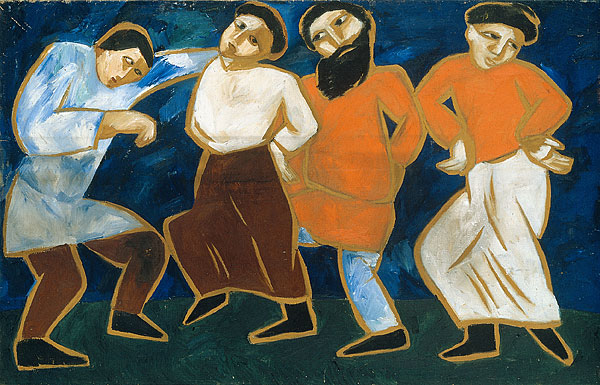Because the Soviet government focused on indigenization (Korenizatsiya) in the 1920’s yet rejected the attempts at independence of socialist republics such as Ukraine, it was unable to create a concrete “Soviet identity” that separated “high culture” from “national identity.” ((Terry Martin, “Modernism or Neo-traditionalism? Ascribed Nationality and Soviet Primordialism,” in Russian Modernity: Politics, Knowledge, Practices, ed. David L. Hoffmann and Yanni Kotsonis (New York: St. Martin’s Press, Inc., 2000), 167.))
Contradiction regarding the Soviet Union’s handling of nationalities began with the Law of the Finnish Sejm and the First Declaration of the Rada. In the former, Finland declared its independence after the fall of the Tsarist Regime. ((http://soviethistory.msu.edu/1917-2/the-empire-falls/the-empire-falls-texts/sejm-law-on-the-supreme-power-in-finland/)) The Bolshevik government accepted this first declaration of independence, but it rejected the Declaration of the Rada. ((http://soviethistory.msu.edu/1917-2/the-empire-falls/the-empire-falls-texts/first-universal-declaration/)) In “On the Question of the Nationalities or of Autonomization,” Lenin argues for the retention of “the union of socialist republics as regards the diplomatic apparatus” in order to strengthen the Union. However, Lenin and the Soviet government granted Finland’s independence. However, he also warned against the spread of the “Great-Russian chauvinism” to minority populations because this would have created a division between nationalities. ((http://soviethistory.msu.edu/1921-2/transcaucasia/transcaucasia-texts/lenin-on-nationality-policy/)) This division would have undermined the unity of the Russian people as proletariats. On one hand, Lenin called for the retention of socialist republics and denounced Great-Russian chauvinism, yet on the other the Bolshevik government rejected the Declaration of the Rada and accepted Finland’s independence. These contradictions marked the Soviet government’s early struggle deciding whether to create a “Soviet identity” through class identification, national identification, or both.
The Bolsheviks recognition the importance of the support of the many nationalities present in Russia and Korenizatsiya in the 1920’s further exemplifies this contradiction. In order to control the Tsarist military forces, the Bolshevik members of the Petrograd Soviet went to speak with the “Caucasian” members of the military in their native tongue. Previously, ethnic Russian officers and generals controlled the majority of the military force and gave orders in Russian. The Soviets’ decision to communicate with each nationality in its native tongue demonstrated the conscious demarcation of these nationalities. Further, Korenizatsiya, or indigenization, was the government’s support regarding the preservation of minority cultures through education and local practice. Members of these minority communities were encouraged to spread and utilize their native tongue and culture. However, in places like Ukraine, calls for independence were rejected. Under Stalin, this expectation of a separation between “high culture” and “national identity” continued through the implementation of practices such as passportization.
The Soviet government expected its people to accept this flawless distinction between Soviet “high culture” and “national identity” in their identities as the USSR began to industrialize. It expected a peaceful coexistence between the “modern and traditional elements,” also called neo-traditionalism. ((Terry Martin, “Modernism or Neo-traditionalism? Ascribed Nationality and Soviet Primordialism,” in Russian Modernity: Politics, Knowledge, Practices, ed. David L. Hoffmann and Yanni Kotsonis (New York: St. Martin’s Press, Inc., 2000), 163.)) However, by the time Stalin introduced his first Five-Year Plan, the Soviet government had encouraged the distinction between nationalities for too long. As it attempted to create this “Soviet high culture,” it continued to contradict itself and confuse the definition of the identity of its people.

